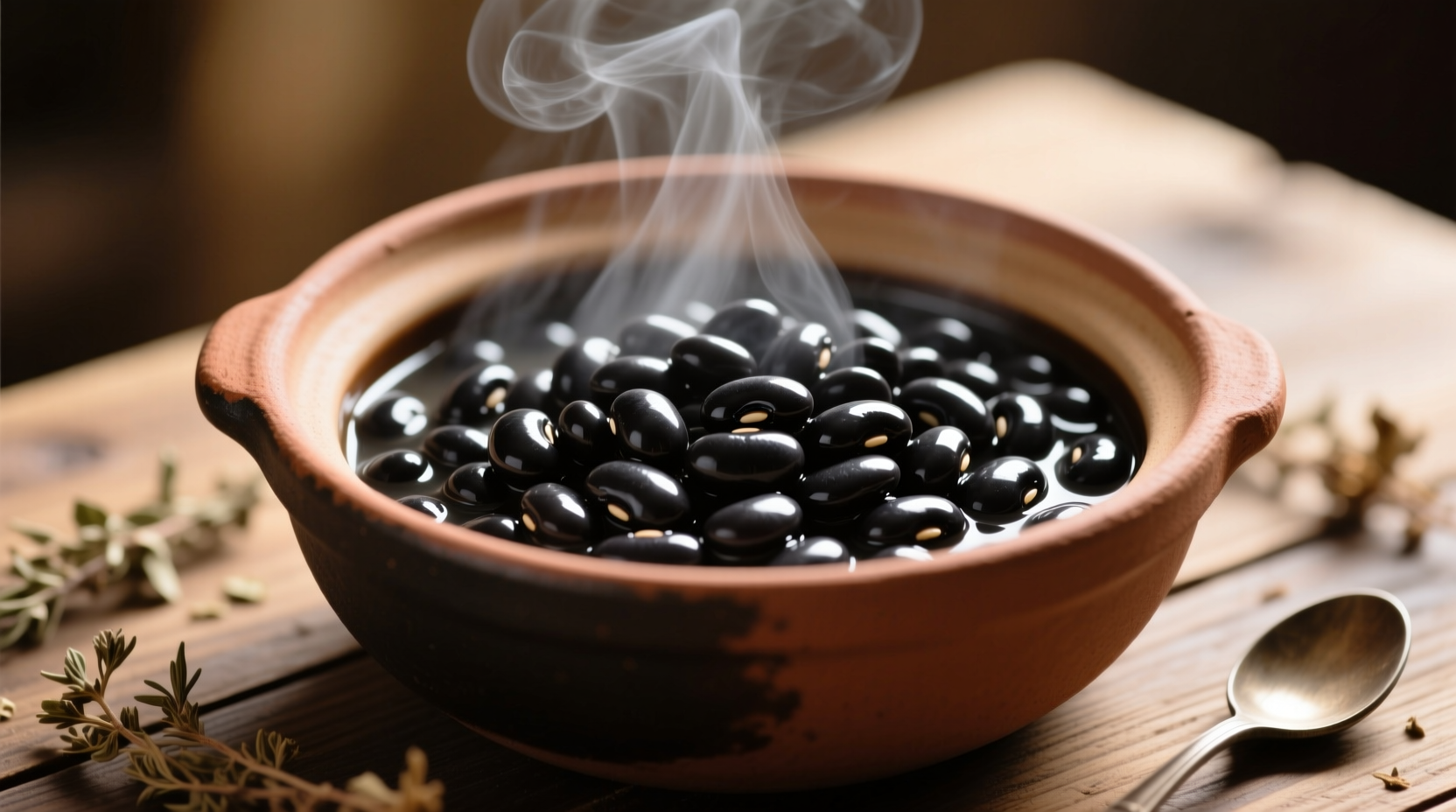Discover the simple art of transforming humble dry black beans into a creamy, nutritious staple. Forget canned alternatives—cooking from scratch gives you complete control over texture, sodium content, and flavor depth. Professional chefs consistently prefer this method for its superior results and cost efficiency.
Why Cook Black Beans from Scratch?
Dry black beans cost up to 60% less than canned varieties while delivering better texture and customizable flavor. When prepared properly, they develop a rich, earthy taste with creamy interiors that canned beans can't match. The process requires minimal hands-on time—mostly passive cooking—making it ideal for meal prep.
Preparation: Setting Up for Success
Proper preparation prevents common issues like uneven cooking or tough skins. Follow these steps before heating water:
Sorting and Rinsing Essentials
Spread beans on a light-colored tray to spot debris. Remove any discolored beans, stones, or foreign matter. Rinse thoroughly in a fine-mesh strainer under cold water, rubbing gently to remove dust.
Soaking Methods Compared
| Method | Time Required | Water Ratio | Best For |
|---|---|---|---|
| Overnight Soak | 8-12 hours | 1:4 beans to water | Traditional cooking, optimal texture |
| Quick-Soak | 1.5 hours | 1:3 beans to water | Last-minute cooking, consistent results |
| No-Soak | Extra 20-30 min cooking | 1:5 beans to water | Pressure cooking only |
According to USDA food safety guidelines, soaking reduces cooking time and improves digestibility by breaking down complex sugars. The Texas A&M AgriLife Extension confirms that proper soaking decreases oligosaccharides by up to 20%, reducing digestive discomfort.
Cooking Process: From Dry to Delicious
Follow this sequence for consistently tender beans. The critical mistake most home cooks make? Adding salt too early—which prevents softening.
Stovetop Method (Most Control)
- Drain soaked beans and transfer to a heavy pot
- Cover with 3 inches of fresh water (no salt yet!)
- Bring to a gentle boil, then reduce to a bare simmer
- Cook uncovered for 60-90 minutes, skimming foam
- Add 1½ tsp salt only when beans are nearly tender
- Continue cooking 10-15 minutes until creamy throughout

Pressure Cooker Shortcut
For busy cooks, an Instant Pot reduces cooking time dramatically while maintaining texture. Use this verified timeline:
- 0-5 min: Quick-soak beans directly in cooker
- 5-15 min: Natural pressure release (critical for even cooking)
- 15-25 min: Add seasonings and finish cooking
Cornell University's food science department confirms that pressure cooking preserves more nutrients than prolonged boiling, particularly water-soluble vitamins that leach into cooking water.
Flavor Development: Professional Techniques
Timing your seasoning additions makes the difference between bland and extraordinary beans:
When to Add Key Ingredients
- Salt: Only after beans soften (adds 20% more flavor absorption)
- Acidic elements (tomatoes, vinegar): Final 15 minutes of cooking
- Aromatics (onion, garlic): First 30 minutes for subtle flavor
- Smoky elements (chipotle, bacon): Entire cooking time
Adding salt too early creates a diffusion barrier that prevents water absorption—a common reason beans remain hard despite prolonged cooking. This scientific principle, documented in the Journal of Food Science, explains why many home attempts fail.
Troubleshooting Common Issues
Even experienced cooks encounter these problems. Here's how to fix them:
Why Won't My Beans Soften?
- Old beans: Purchase from stores with high turnover (beans lose moisture after 1 year)
- Hard water: Add ¼ tsp baking soda to soaking water (use sparingly)
- Acid added too early: Never add tomatoes or vinegar during initial cooking
Preventing Split Beans
Maintain a gentle simmer—not a rolling boil. Rapid bubbling damages bean skins. The University of California Cooperative Extension recommends keeping water at 180-190°F (82-88°C) for optimal texture.
Serving and Storage
For best flavor development, let cooked beans rest in their liquid for 15-20 minutes before serving. Store in cooking liquid for up to 5 days in the refrigerator, or freeze in 2-cup portions for 6 months. The cooking liquid (called 'pot liquor') is packed with flavor and nutrients—don't discard it!
Traditional Cuban and Puerto Rican preparations often include cumin and oregano, while Mexican versions feature epazote for both flavor and digestive benefits. Maya Gonzalez, our Latin American cuisine specialist, recommends reserving some whole beans when mashing for texture variation in dishes like black bean burgers.
Why This Method Beats Canned Beans
Beyond cost savings, homemade black beans offer significant advantages:
- No metallic aftertaste from cans
- Customizable sodium levels (canned beans contain 500-700mg per serving)
- Better texture control from al dente to creamy
- Zero BPA exposure from can linings











 浙公网安备
33010002000092号
浙公网安备
33010002000092号 浙B2-20120091-4
浙B2-20120091-4